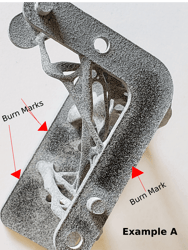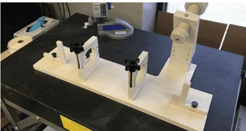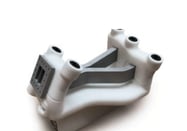Historically most machine shops have been job shops, which makes the business dependent on constantly obtaining new customers with new machining needs. 3D printers can enable a machine shop to create its own new products and gain more independence.
Let us review why it makes sense to adopt 3D printers in machine shops today.
- Diversification - Metal 3D print technologies are the next evolution to the machine shop. The ability to complement their subtractive with additive manufacturing. The evolution of adding plastics, carbon, and now metal additive manufacturing to produce tooling, fixturing, and end-use parts.
- Optimize the tooling with metal 3D printing. Shops can now leverage 3D printing cost-effective plastic parts or metal parts to enhance workflows and projects. A machine shop can rely on the printer to mitigate errors and improve timelines from pre-production prototyping to creating production tools to printing end-use parts for quick fixes.
- Small-batch production — additive manufacturing technologies provide direct production options for low volume production and bridge manufacturing. Save on tooling costs with 3D printing directly from a file, and take advantage of speed to market.
Complex geometries are the best use case for metal AM.
Most importantly, metal 3D printing
- Is especially helpful for geometries that are costly, time and labor-intensive processes to produce on a CNC machine. Designs that leverage metal AM's freedom to generate internal features of the part, intricate geometries such as lattices, and complex forms such as topology-optimized shapes to maximize their performance while minimizing their weight and the total number of components in an assembly.
- Communication to the machinists to help interpret drawings that have so many call-outs and can be difficult to catch all with complex geometries. This helps eliminate time and material waste with a CNC job that a call-out may have been missed. A 3D print can be a valuable tool prior to machined part production.
- To produce parts for test fit and function. This will shorten the feedback loop in the machine shop with 3D prints in advance of production. 3D printing allows for faster prototypes, setting up prints to run overnight then using parts the next day.
Jigs, fixtures, and other customized production tools are essential for efficient, effective manufacturing. Tooling is a fixed expense that must be amortized across large quantities of parts.
- One important capability is an alternative to casting. Machining lead times can be a hostage to the lead times from foundries delivering cast parts. With production, metal additive manufacturing in-house, the machine shop can print its own parts as needed, without any lead-time from a supplier.
In summary, additive manufacturing eliminates the following barriers with tolling-free production:
- Optimized designs
- Mass customization
- Rapid design to production
- Cost-effective at any scale
- Digital inventory
- Low operator burden
To learn more about metal additive manufacturing solutions, please connect with us directly at https://www.mastergraphics.com/desktop-metal








 The cleaned parts are ready for finishing or shipping depending on your or your client's needs. Again, remember the advantage of additive manufacturing is cost-effectiveness and turnaround time.
The cleaned parts are ready for finishing or shipping depending on your or your client's needs. Again, remember the advantage of additive manufacturing is cost-effectiveness and turnaround time. 


